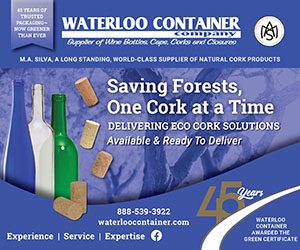Your question about how to avoid a swampy, reductive odor in your Chardonnay after bottling is an interesting one. For readers who may not be aware, “reductive” is a non-exact sensory term often used to signal rotten egg or hydrogen sulfide-type aromas. Hydrogen sulfide in wine can be caused by a few different things but is most often produced by Saccharomyces cerevisiae during fermentation, usually due to a nutrient or amino acid deficiency. Since you don’t specifically mention rotten eggs here, and because you say your wine smells fine right before bottlings, I’ll assume we’re not talking about a classic “rotten egg” hydrogen sulfide problem.
Ruling out hydrogen sulfide and the related mercaptan and sulfide-containing compounds that are corollary defects, I’m assuming you’re talking “swampy and reductive” in a more general sense. Not knowing more particulars is tough, but since the defect seems to be catalyzed when you bottle your wine, let’s investigate a few areas.
First, don’t bottle your wine too soon. Sometimes, right after harvest, I go to the winery and want to take a 750 mL bottle of a tank sample home over the weekend for later analysis. I pull a 750 mL bottle of a newly-fermented wine (just dry and sulfured), leave about two inches headspace, cap it tightly, and then take it home with me. When I open the sample a day later, I smell a reductive hydrogen-sulfide like aroma and when, worried, I run back to smell the tank, the tank smells fine. Similarly, when I pour the sample from the bottle into a glass and let it sit for a few minutes, the worrisome aroma blows off. What I think happens here is that new wine (think: slightly spritzy, full of dissolved CO2, slightly cloudy) is in a very reductive state and further robbing it of oxygen by capping up the bottle pushed it over an edge. The redox potential of the wine shifts towards the conditions being right for the release of these sulfur-containing off aromas. Add oxygen (open the bottle, swirl a glass) and the aromas go away. Apply this scenario to a wine that’s closer to bottling and you can see that the same thing might happen. It’s possible that your wine is too reductive, which is easier to arrive at if your wine hasn’t had enough oxygen exposure over its lifetime, i.e. that you’re bottling it too soon. Try waiting another month or two, and possibly give it another racking, before bottling.
Second, try a different yeast strain. Some strains naturally produce more sulfur-containing off-aromas and off-aroma precursors than others. If this swampy defect that you notice after bottling happens often, you may want to consider switching up your yeast strain. I use a lot of PDM/EC1118 and never have had this problem. You could also try the relatively new strains from the Renaissance Yeast company, which were naturally bred to not produce any H2S (see “Techniques” column in this issue).
Finally, try (carefully) using a little more oxygen in your winemaking process. You might want to try gradually introducing a little more oxygen into your winemaking process, especially early on when wines are more resilient to shifts in redox potential. Be sure to separate heavy lees quickly from your young wine. Maybe add in another racking at around 6 months of age. Don’t bottle too early; Chardonnays can take, and indeed need, roughly 6-12 months of aging. If you plan on long-term aging on the lees be sure to perform a bâtonnage. You don’t want to purposefully add a lot of oxygen, but too little oxygen at bottling can lead to a decrease in the redox potential, which in turn can cause the release of reductive off aromas.




